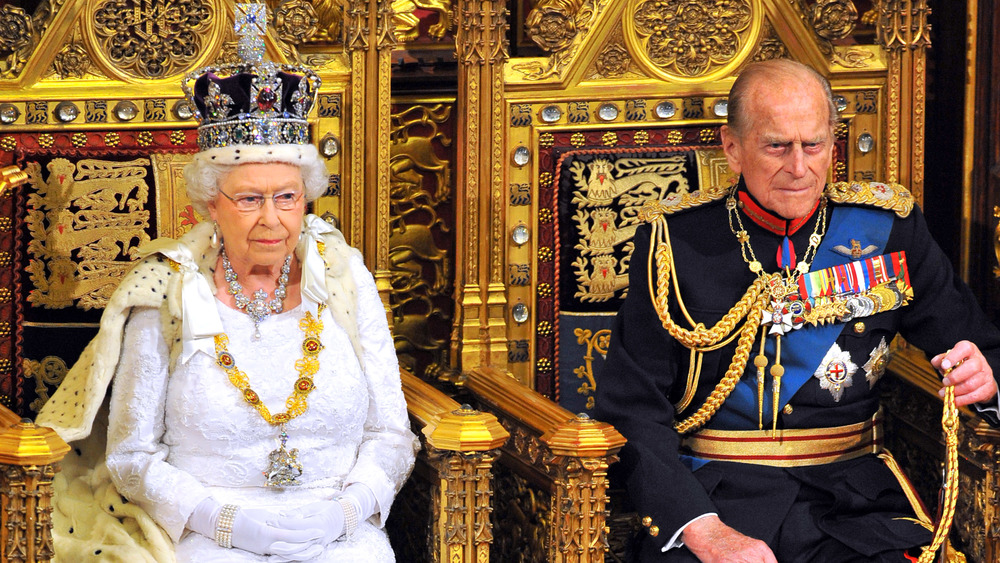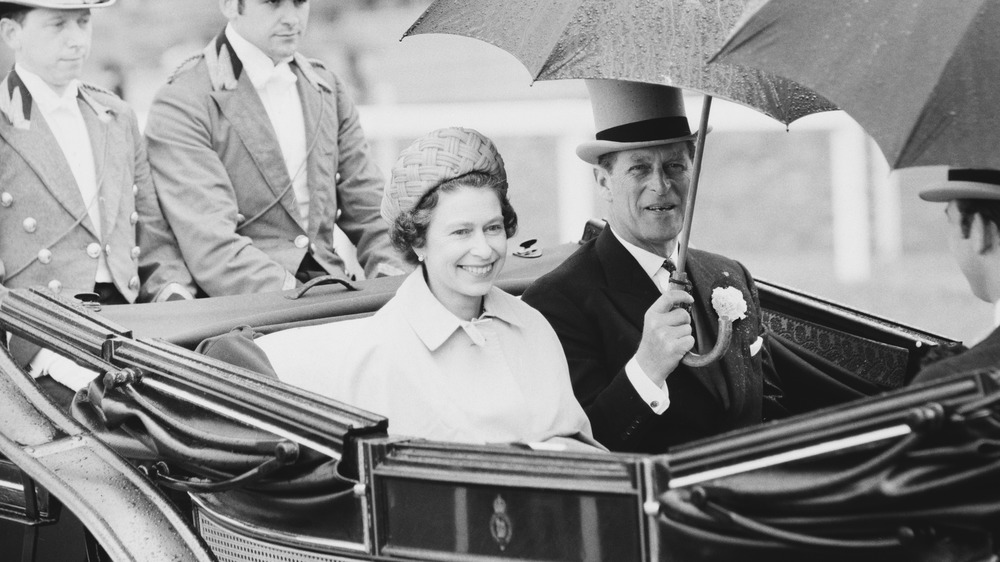The Royal Tradition Prince Philip Broke For One Of His Kids
Queen Elizabeth followed tradition to the letter by never giving birth to her children in a hospital. Most of her childbirths were, nevertheless, unusual. Until shortly before Prince Charles' 1948 delivery in Buckingham Palace's Buhl Room, British Heritage notes that the only males accepted (actually, required) at royal births were government officials to prevent "baby swapping" (duh). No government official, apparently, witnessed Charles' birth. Neither, however, did dad Prince Philip — who, legend has it, was playing a game of squash. Only after did the prince enter the room, where he, the Daily Mail reports, compared his newborn son to "plum pudding."
When Elizabeth gave birth to Princess Anne in 1950, she broke tradition yet again. This time, she did so by delivering her daughter at Clarence House and not Buckingham Palace. It's not that the queen wanted to be controversial, rather, the palace was being renovated. While Philip was absent from his daughter's birth, as well, he toasted the occasion with champagne, per BBC News.
Ten years later, the couple's third child, Prince Andrew, was born at Buckingham Palace, as was still customary (via Town & Country). While neither of the royal parents broke with tradition while welcoming Andrew into the world, viewers of The Crown will no doubt remember his birth the best. That's because, per Babyology, Elizabeth gave birth to Andrew after being drugged with an anesthetic cocktail comprised of scopolamine and morphine (a.k.a. "twilight sleep"). Her attendants pulled baby No. 3 out of her body with forceps.
How Prince Philip broke tradition for the birth of his son, Prince Edward
As unusual as her other childbirths had been by royal standards, it was Queen Elizabeth's fourth and final childbirth that shattered royal tradition. According to Ingrid Seward's book, My Husband and I: The Inside Story of 70 Years of Royal Marriage, for Prince Edward's birth, the queen succeeded in convincing husband Prince Philip to accompany her during the delivery (via Independent.ie).
"The Duke of Edinburgh was actually holding his wife's hand as their youngest was born on March 10, 1964," wrote Seward. "The Queen, by then aged 37, had asked him to be there; she'd been keenly reading women's magazines that stressed the importance of involving fathers in childbirth and had become fascinated by the idea."
To this day, and out of all his children, his youngest is the only portrait which hangs in Prince Philip's study, according to Express. Prince Edward is also set to inherit his father's title when he passes. Coincidence? We think not.

